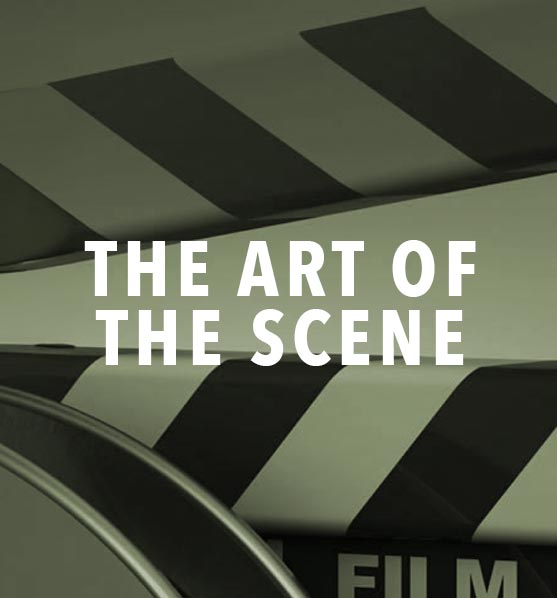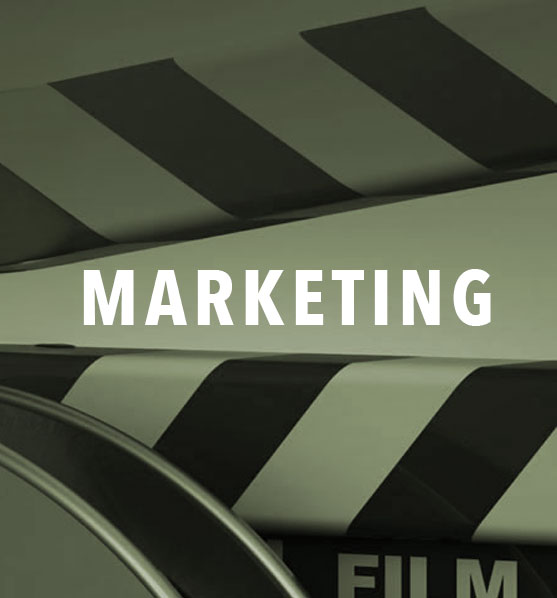QUICK SHEETS
Reference sheets from our round-table discussions
QUICK SHEETS
Reference sheets from our round-table discussions

Screenwriting Marketing Tips.
The Hollywood Writers Group Quick Sheets are a free public resource to support screenwriters in their creative endeavors. We hope you find our screenwriting marketing tips helpful, and wish you the best on your own unique journey.
Download a free copy of this quick sheet below.
"What we have here is failure to communicate."
Interested in updates to our quick sheets? Scroll to the bottom of this page.
New quick sheets are released every 2 weeks.
MARKETING
Table of Contents
Purple Cow vs. Hit Makers
Screenwriting Marketing Tips.
Seth Godin’s Purple Cow and Derek Thompson’s Hit Makers both deal with marketing and what makes things popular, but they approach the problem from different angles and philosophies. Here’s a breakdown of the principle marketing differences between the two:
1. Core Idea
- Purple Cow (Seth Godin):
Focuses on being remarkable. His main thesis is that standing out in a crowded market is the only way to succeed. Average is invisible. You need to be a “purple cow” in a field of brown cows. - Hit Makers (Derek Thompson):
Focuses on why things become popular. His central idea is that hits are born from a combination of familiarity and novelty, supported by distribution, timing, and psychological principles like “mere exposure effect.”
2. Approach to Creativity
- Godin:
Encourages radical innovation and risk-taking. You create something new and then find an audience for it. - Thompson:
Emphasizes pattern recognition and tweaking existing ideas. He believes the most successful ideas often feel familiar, but with a fresh twist.
3. View of the Audience
- Godin:
Advocates for finding a “tribe” — a niche audience who cares deeply. Marketing is about permission, not interruption. - Thompson:
Studies the mass audience. He examines broad appeal and how the right combination of exposure and emotional resonance can make something a hit.
4. Marketing Tactics
- Godin:
Suggests traditional advertising is broken. You need word of mouth, storytelling, and being truly different to succeed in the modern market. - Thompson:
Shows how platforms, algorithms, and exposure frequency can engineer success — often regardless of originality.
5. Philosophical Lens
- Godin:
Is more prescriptive and motivational. His writing is for entrepreneurs and marketers trying to break out of the ordinary. - Thompson:
Is more descriptive and analytical. He dives into behavioral science, data, and historical case studies to explain why hits happen.
Comparison Chart:
|
Purple Cow (Godin) |
Hit Makers (Thompson) |
|
|
Main focus |
Be remarkable |
Understand popularity |
|
Marketing style |
Disruption, niche appeal |
Mass psychology, exposure, familiarity |
|
Audience view |
Create for the few who care deeply |
Create for the many who respond predictably |
|
Key principle |
Stand out to be noticed |
Be familiar, then twist it |
|
Tactical mindset |
Word-of-mouth, innovation |
Distribution, data, timing |
Basic Principles
Screenwriting Marketing Tips.
Here are effective ways a screenwriter should approach marketing and selling their story during the screenplay-writing process:
1. Start with a Strong, Marketable Concept
- Clearly define your idea in a single compelling sentence (logline).
- Ask yourself, “Why this story, and why now?”
- Know the current market and identify where your story fits in.
2. Understand Genre Expectations
- Be clear on your screenplay’s genre and tone.
- Know audience expectations, trends, and successful comparables (comps).
- Clearly communicate how your screenplay fits into (and differentiates from) existing content.
3. Write with a Clear Audience in Mind
- Identify your target audience early and cater your story’s themes, conflicts, and characters to resonate with them.
- Recognize the marketability of your protagonist—make sure they are relatable, compelling, and unique.
4. Craft a Compelling Logline and Synopsis
- Develop a concise, captivating logline early on.
- Continuously refine a short and long synopsis as you write, emphasizing strong hooks, character arcs, and emotional stakes.
5. Build Commercial Appeal into Your Characters
- Ensure your protagonist has a clear goal, strong motivations, and relatable conflicts.
- Create distinctive, memorable characters that attract talent and audience interest.
6. Understand Industry Trends and Demands
- Keep track of market developments, such as streamer demands, trending genres, and themes.
- Be aware of cultural shifts influencing the types of stories studios and audiences seek.
7. Consider Budget and Production Practicality
- Write with awareness of how your script translates practically to screen.
- Make your screenplay attractive to producers by keeping potential budget constraints in mind (especially for emerging writers).
8. Develop a Clear and Engaging Pitch
- Continuously work on your elevator pitch and practice it during the writing process.
- Ensure your pitch highlights originality, emotional resonance, and market appeal succinctly.
9. Build a Strong Personal Brand and Network
- Engage with the writing and filmmaking community through workshops, festivals, industry events, and social media.
- Develop relationships early, positioning yourself as a professional open to collaboration and feedback.
10. Refine Your Script with Industry Feedback
- Seek industry-level script coverage or feedback early in your process.
- Address notes constructively, emphasizing clarity, commercial potential, and narrative coherence.
Questions for Further Reflection:
- How does your screenplay uniquely fit into today’s marketplace?
- Can you succinctly articulate your story’s strongest selling point?
- Are your characters engaging enough to attract top-tier talent?
A Marketable Concept
Screenwriting Marketing Tips.
To ensure you’re writing a highly marketable screenplay, prioritize the following critical factors:
1. Concept & Hook
- Fresh Yet Familiar: Combine a unique twist with proven themes.
- Clear High Concept: Easily summarized premise that immediately grabs interest.
- Market Test: Share your logline early to gauge excitement from diverse readers.
2. Genre Awareness
- Know Your Audience: Understand what audiences of your chosen genre expect.
- Commercial Viability: Genres like thriller, horror, comedy, action, and sci-fi typically have broader appeal.
- Trend Awareness: Balance originality with market trends, avoiding clichés while embracing proven concepts.
3. Structure and Pacing
- Clear, Strong Structure: Use industry-standard structures (three-act, Blake Snyder’s beats, Hero’s Journey) to maintain pacing.
- Engaging Opening (First 10 pages): Start strong, with immediate stakes and compelling character introductions.
- Maintain Momentum: Consistent story progression and tension, avoiding slow points.
4. Compelling Characters
- Distinct Protagonist: Characters must have clear goals, relatable flaws, and active arcs.
- Memorable Supporting Cast: Richly developed, adding depth and emotional resonance.
- Character Chemistry: Authentic relationships that drive emotional investment.
5. Strong Emotional Core
- Relatability: Themes and conflicts that resonate universally.
- Emotional Engagement: Characters must evoke empathy, curiosity, or strong emotional reactions.
- Stakes and Urgency: Clearly defined stakes that emotionally invest your audience.
6. Clear and Concise Writing
- Visual Storytelling: Focus on showing rather than telling; vivid imagery, action-driven narratives.
- Dialogue Precision: Realistic, memorable, purposeful dialogue that reveals character and drives the plot.
- Lean and Sharp: Tight descriptions and succinct writing style, avoiding overly dense prose.
7. Budget and Production Considerations
- Cost Awareness: Be conscious of locations, special effects, cast size, and production scale.
- Versatile Locations: Limited, adaptable settings for budget flexibility (especially for new writers).
- Casting Potential: Roles that attract recognizable talent to increase marketability.
8. Market Awareness and Comparative Analysis
- Comparable Films (“Comps”): Clearly identify successful films similar to your screenplay.
- Research Success Factors: Understand why similar films succeeded commercially and critically.
- Unique Selling Proposition (USP): Clarify what sets your screenplay apart.
9. Feedback and Iteration
- Professional Feedback: Utilize script coverage services, writers groups, and industry professionals.
- Objective Revisions: Be willing to rewrite significantly based on insightful feedback.
- Industry Relevance: Adapt your script based on industry insights, current trends, and producer needs.
10. Presentation and Pitch
- Professional Formatting: Strict adherence to screenplay formatting conventions.
- Polished Logline and Synopsis: Compelling, clear, and concise summaries that entice interest.
- Pitch Preparation: Be ready to confidently articulate your story’s appeal, target audience, and commercial viability.
Quick Checklist for Marketability
- Fresh, clear, marketable premise
- Strong commercial genre choice
- Engaging opening scene
- Active, compelling protagonist
- Clear structure and excellent pacing
- Relatable emotional core
- Tight, polished writing style
- Consideration of budget constraints
- Professional feedback and revisions
- Polished presentation and effective pitching skills
Focusing on these core elements ensures your screenplay not only tells a great story but appeals directly to industry gatekeepers and wider audiences.
Genre Expectations
Screenwriting Marketing Tips.
A screenwriter can best understand genre expectations by studying how specific genres consistently deliver on audience promises—in tone, structure, character arcs, and plot devices. Here’s a clear, actionable approach:
1. Watch and Read Within the Genre
- Watch at least 10 successful films in the genre.
- Read the screenplays for at least 3 of those.
- Take notes on:
- Common opening scenes
- Typical character types (heroes, villains, sidekicks)
- Story beats and pacing
- Recurring themes and motifs
- How it ends—what counts as a satisfying resolution
2. Study Genre Breakdown Guides
- Use resources like:
- Save the Cat! (Blake Snyder’s genre categories like “Monster in the House” or “Buddy Love”)
- The Story Grid by Shawn Coyne (breaks down genres into obligatory scenes and conventions)
- John Truby’s The Anatomy of Story
- Learn the obligatory scenes and conventions:
- For example, a mystery must have red herrings, a big reveal, and a detective or stand-in.
- A romantic comedy must include a meet-cute, midpoint bonding, break-up, and final reconciliation.
3. Understand the Audience’s Emotional Contract
- Each genre promises a specific emotional journey:
- Horror = fear and survival
- Action = excitement and triumph
- Comedy = surprise and relief
- Drama = empathy and catharsis
- Thriller = tension and cleverness
- Romance = longing and fulfillment
- Know what feeling your story must consistently generate.
4. Mix Genres with Clarity, Not Confusion
- You can blend genres (e.g., sci-fi horror, action comedy), but one should dominate.
- Know which genre sets the primary expectations, especially for marketing and tone.
5. Use Loglines and Comparables
- Write a logline early. Ask yourself: “Would a fan of this genre be intrigued?”
- Look for comps (e.g., *It’s like Get Out meets Mean Girls) to help identify tone and audience.
6. Get Feedback from Genre Fans
- Workshop your script with people who love that genre.
- Ask: Did it deliver what you expected? Where did it fall short?
Final Tip:
Don’t subvert until you can deliver.
Before breaking rules, prove you understand them. Genre is a promise. Fulfill it—then surprise us.
Target Audience
Screenwriting Marketing Tips.
A screenwriter best identifies their target audience by aligning the core elements of their story—genre, tone, themes, characters, and emotional payoff—with the demographics and psychographics of people most likely to respond to it.
1. Study Comparable Films
- Identify 3–5 successful films similar in genre, tone, and theme to your screenplay.
- Research who watched those films using sources like:
- Box Office Mojo
- The Numbers
- Nielsen Ratings
- Streaming platform data summaries
Ask:
- Was the core audience young adults, families, or older viewers?
- Did it skew male or female?
- Was the audience mostly domestic or international?
2. Use Social Media Insights
- Search hashtags, fan pages, and comment sections of similar films.
- Observe who engages with the content—age, interests, language, tone.
- Look at platforms like:
- Reddit (e.g., r/movies, r/horror, r/truefilm)
- TikTok and Instagram for youth-driven trends
- Facebook groups for older demographics
3. Analyze Genre-Specific Trends
- Some genres have clear patterns:
- Horror: Younger audiences, often 18–34
- Rom-coms: Female-leaning, 25–44
- Action: Male-heavy, 18–49
- Prestige drama: Older, 35+
Study how your genre performs across age and gender splits.
4. Define Your Screenplay’s Themes and Tone
- Break down what your story is really about—revenge, coming of age, identity, survival.
- Ask: Who personally relates to that experience?
- Use tools like ChatGPT to generate target audience profiles based on theme.
Example:
Prompt: “Who is the likely audience for a thriller about a mother trying to rescue her child from a cult in a remote town?”
5. Build a Reader Profile
Create a sample “ideal viewer” by answering:
- How old are they?
- What movies do they love?
- What scares them? Inspires them?
- Where do they stream content?
This helps guide tone, character choices, and even dialogue.
6. Test with Real Readers
- Get feedback from people in your intended age group or background.
- Ask: “Would you watch this? Why or why not?”
- Refine based on real-world reactions.
Key Questions to Ask Yourself:
- Who will pay to watch this story?
- What emotions will they want from it?
- Where do they watch movies—cinema, streaming, mobile?
Knowing your audience isn’t just about marketing. It helps you write more focused, emotionally resonant stories that connect.
Here’s how to do it, step by step:
1. Define the Genre and Subgenre
- Start with the genre (e.g., horror, romantic comedy, action).
- Then narrow it: is it a slasher? psychological horror? screwball comedy? dystopian sci-fi?
- Each subgenre has a different audience profile.
- Teen slasher ≠ elevated horror
- Rom-com for 20-somethings ≠ romance drama for 50+
2. Clarify the Emotional Experience
Ask:
What do I want the audience to feel?
- Laugh? Cry? Feel inspired? Afraid? Empowered?
The emotional promise of your screenplay tells you who seeks that feeling.
Example:
- If you’re writing a story about a teenage girl battling anxiety with humor, you’re probably targeting young women 16–25.
3. Analyze Your Characters and Themes
- Who are your main characters?
Viewers often identify with leads close to their own age, struggles, or aspirations. - What are the key themes?
Themes like identity, aging, rebellion, or loss attract different groups.
If your lead is a 60-year-old man dealing with legacy and mortality, you’re probably not targeting Gen Z.
4. Study Comparable Films
- List 3–5 similar films—in tone, genre, or premise.
- Research who watched those movies:
- Box office breakdowns
- Streaming data (where possible)
- Reviews and fan communities
- Marketing materials and taglines
Ask:
- Was the audience mostly male or female?
- What age group dominated?
- What platforms did they use to engage with it?
5. Use Basic Demographic & Psychographic Labels
Think in terms of:
- Age group: Kids, teens, 18–24, 25–34, 35–49, 50+
- Gender skew: Is it more female-driven? Male-dominated? Balanced?
- Lifestyle and interests: Are they gamers, book lovers, horror buffs, sports fans, activists?
Example:
If your screenplay is a thriller set in the esports world, you might target males 18–34 who are tech-savvy and follow gaming culture.
6. Craft a One-Sentence Target Audience Profile
Put it all together into a clear audience snapshot:
“This screenplay targets women 25–40 who love emotionally driven dramas like Marriage Story and Normal People, exploring the tension between career ambition and personal sacrifice.”
Bonus Tip: If you plan to pitch or market your script, knowing your audience helps with tone, comps, and even casting choices.
Loglines
Screenwriting Marketing Tips.
View our quick sheet on crafting loglines.
https://hollywoodwritersgroup.com/quick-sheets-logline-screenwriting/
Character Development
Screenwriting Marketing Tips.
Character development is crucial to marketing a screenplay because strong, well-defined characters make your story emotionally compelling, easier to sell, and more marketable to producers, actors, and audiences.
Here’s how character development connects directly to marketing principles:
1. Characters Drive the Emotional Hook
- Marketing is about emotion.
- Well-developed characters evoke empathy, desire, curiosity, and conflict.
- When pitching, if the audience cares about the character, they care about the story.
Example: “A brilliant but self-destructive drummer risks everything for greatness.” (Whiplash)
This pitch works because the character’s flaw and obsession sell the stakes.
2. Clear Archetypes Make the Pitch Stick
- A strong character with a clear identity helps the listener quickly grasp the story.
- Use recognizable but fresh archetypes (e.g., underdog, reluctant hero, rebel).
- Archetypes help attach the project to audience expectations and studio needs.
“It’s Die Hard with a female lead who’s an off-duty EMT in a skyscraper.”
Now we know her role, her stakes, and her appeal.
3. Actors Buy Into Roles, Not Plots
- Talent and agents look for characters with depth and arc.
- A pitch with a juicy role is more likely to attract star power, which increases marketability.
- Ask: would an actor want to play this person?
4. Character Arcs Signal Theme and Tone
- A clear arc (from flawed to transformed) shows the emotional journey—and makes the story’s message and mood marketable.
- A character’s transformation tells the audience what they’ll feel by the end.
“A cynical sports agent regains his soul after losing everything.” (Jerry Maguire)
This tells you the arc, the tone (redemption with heart), and the target audience.
5. Character Demographics Define the Target Audience
- The lead character often reflects the audience you’re targeting.
- Age, gender, race, and worldview of your lead can help producers see who the film is for and how to position it.
Teen girl navigating social media anxiety? Gen Z audience.
Aging father seeking redemption? Adult drama for 40+.
6. Merchandising, Branding, and Longevity
- Strong characters lead to spin-offs, sequels, merchandise, and brand identity.
- This matters to studios and streamers looking for long-term ROI.
Think: Barbie, John Wick, Deadpool, Wednesday Addams—character-first IP.
In a Pitch:
Frame your characters like this:
- Who are they at the start?
- What do they want?
- What’s their flaw?
- How are they tested, and how do they change?
Trends & Demands
Screenwriting Marketing Tips.
To best predict future market trends when writing a screenplay, a screenwriter should combine strategic observation, industry research, and cultural awareness with a bit of creative foresight. Here’s a practical, step-by-step guide:
1. Study Current Industry Trends
- Track what’s selling: Review spec sales, Black List scripts, Variety, Deadline, and The Ankler.
- Look at what studios and streamers are buying now—genre, tone, themes.
- Monitor box office and streaming data: Is horror rising? Is fantasy slowing? What’s hot on Netflix vs. A24?
Ask: “What’s succeeding now, and why?”
2. Look 2–3 Years Ahead
- From idea to release, screenplays take 2–5 years to reach audiences.
- Ask yourself: “What cultural, technological, or political trends might explode in 2–3 years?”
- Anticipate the next wave, not today’s wave.
If AI is rising fast now, your screenplay about AI ethics or creative rebellion might hit at the right time if released in 2027.
3. Follow the Money
- Watch what major studios, mini-majors, and streamers are investing in.
- Read reports from:
- Nielsen
- PwC Global Entertainment Outlook
- MPA annual reports
- Look for where audience attention is shifting (genre, format, length, platform).
Is animation for adults growing? Are docu-dramas peaking?
4. Observe Social and Cultural Shifts
- Great stories often reflect or subvert the emotional undercurrent of society.
- Watch:
- Social movements (e.g., climate, gender, identity)
- Generational values (what Gen Z cares about vs. Millennials)
- Public fatigue (e.g., superhero burnout)
If society is craving optimism post-crisis, dystopia may cool while hopeful sci-fi rises.
5. Use AI and Tech Tools
- Use ChatGPT, Midjourney, and tools like Google Trends, IMDbPro, or WGSN (for trend forecasting) to:
- Analyze keyword popularity
- Track emerging genres or aesthetics
- Scan what audiences are discussing
6. Stay Genre-Specific
- Trends shift by genre:
- Horror often leads social commentary (e.g., Get Out, Hereditary)
- Sci-fi tracks tech anxiety
- Comedy reflects cultural taboos and trends
- Know what your genre is evolving toward.
7. Balance Trend with Timelessness
- Don’t chase trends blindly.
- Instead, embed current relevance inside timeless emotional journeys (e.g., love, justice, belonging).
- This gives your story longevity even if trends shift.
The Social Network isn’t just about Facebook—it’s about ambition, betrayal, and identity.
8. Talk to People in the Industry
- Get insights from:
- Managers
- Development execs
- Coverage readers
- Fellow screenwriters
- Ask: “What are people asking for? What are they tired of?”
9. Follow International Markets
- Look beyond Hollywood.
- Korean, Indian, Latin American, and European content is reshaping what global audiences crave.
- Global appeal is increasingly important.
In Short:
Observe the now. Write for the soon. Anchor in the universal.
Budgets & Practicality
Screenwriting Marketing Tips.
Consider budget and location practicality when writing your screenplay for these reasons:
Practical Considerations:
- Lower budgets appeal to more producers.
- Producers look for scripts they can realistically film.
- Single-location stories cost less and attract investors quickly.
- Complex locations increase production expenses and limit interest.
- Practical locations speed up filming and reduce production delays.
- Small casts and fewer scenes simplify production logistics.
Example:
- “Reservoir Dogs” succeeded commercially because Tarantino wrote it to use limited sets and a small cast.
Questions to ask yourself:
- Can your scenes take place in fewer locations without losing impact?
- Could simpler settings increase your screenplay’s appeal?
Focusing on budget and location practicality helps your screenplay become attractive and easier to produce.
Low-budget screenplays:
Understanding basic marketing principles helps you pitch a low-budget screenplay by making your project easier to sell, easier to produce, and more appealing to decision-makers.
Here’s how:
- You know your target market.
You can explain who will want to watch your film and why.
Example: “Fans of Paranormal Activity and The Blair Witch Project love grounded horror with high tension and low production costs.”
- You focus on a clear selling point.
You lead with your hook—what makes your story instantly interesting.
Example: “A single-location thriller about a deaf woman being stalked in her own home.”
- You highlight production practicality.
You frame low-budget elements as creative advantages.
Example: “The film takes place in one cabin, with a small cast, over two nights.”
- You speak the producer’s language.
You show awareness of ROI—return on investment.
You mention similar films that earned strong returns with small budgets.
- You build a positioning statement.
You describe what your script is and where it fits in the market.
Example: “It’s Coherence meets Triangle—philosophical sci-fi with no need for CGI.”
Ask yourself:
- Can you clearly describe the concept, budget, audience, and appeal in under 60 seconds?
- Would your pitch sound like a smart investment to someone with limited funding?
Marketing helps you sell not just the story—but the package.
High-concept screenplays:
Understanding basic marketing principles helps you pitch a high-concept screenplay by making your idea instantly clear, emotionally engaging, and commercially appealing.
Here’s how:
- You lead with a strong hook.
Marketing teaches you to grab attention fast.
Example: “A man relives the same day over and over—until he gets it right.” (Groundhog Day)
- You define your core audience.
You can say exactly who this movie is for.
Example: “This appeals to fans of Inception, Tenet, and Black Mirror.” - You frame your concept with comps.
You compare it to known hits to build immediate interest.
Example: “It’s Jurassic Park meets Lord of the Flies.”
- You position it in the current market.
You know where it fits and why it stands out.
Example: “Studios are looking for contained sci-fi with global stakes and franchise potential.”
- You speak to emotional impact.
Marketing focuses on how a story feels.
Example: “It’s a survival thriller, but at its heart, it’s about a father trying to reach his son before time runs out.”
- You anticipate audience reaction.
You show how the idea will spark buzz, fandom, or word of mouth.
Example: “It has a twist that flips everything the audience thought they knew—just like The Sixth Sense.”
Ask yourself:
- Can you pitch it in one sentence?
- Does the concept promise emotion, conflict, and spectacle right away?
- Would a poster and tagline sell this movie instantly?
Marketing teaches you to shape your pitch like a product—and make them want to buy it.
Developing Your Pitch
Screenwriting Marketing Tips.
Understanding basic marketing principles helps you pitch a low-budget screenplay by making your project easier to sell, easier to produce, and more appealing to decision-makers.
Here’s how:
- You know your target market.
You can explain who will want to watch your film and why.
Example: “Fans of Paranormal Activity and The Blair Witch Project love grounded horror with high tension and low production costs.” - You focus on a clear selling point.
You lead with your hook—what makes your story instantly interesting.
Example: “A single-location thriller about a deaf woman being stalked in her own home.” - You highlight production practicality.
You frame low-budget elements as creative advantages.
Example: “The film takes place in one cabin, with a small cast, over two nights.” - You speak the producer’s language.
You show awareness of ROI—return on investment.
You mention similar films that earned strong returns with small budgets. - You build a positioning statement.
You describe what your script is and where it fits in the market.
Example: “It’s Coherence meets Triangle—philosophical sci-fi with no need for CGI.”
Breakdown:
- You lead with a strong hook.
Marketing teaches you to grab attention fast.
Example: “A man relives the same day over and over—until he gets it right.” (Groundhog Day) - You define your core audience.
You can say exactly who this movie is for.
Example: “This appeals to fans of Inception, Tenet, and Black Mirror.”
- You frame your concept with comps.
You compare it to known hits to build immediate interest.
Example: “It’s Jurassic Park meets Lord of the Flies.”
- You position it in the current market.
You know where it fits and why it stands out.
Example: “Studios are looking for contained sci-fi with global stakes and franchise potential.”
- You speak to emotional impact.
Marketing focuses on how a story feels.
Example: “It’s a survival thriller, but at its heart, it’s about a father trying to reach his son before time runs out.”
- You anticipate audience reaction.
You show how the idea will spark buzz, fandom, or word of mouth.
Example: “It has a twist that flips everything the audience thought they knew—just like The Sixth Sense.”
Ask yourself:
- Can you pitch it in one sentence?
- Does the concept promise emotion, conflict, and spectacle right away?
- Would a poster and tagline sell this movie instantly?
Marketing teaches you to shape your pitch like a product—and make them want to buy it.
Personal Brand
Screenwriting Marketing Tips.
Your career as a screenwriter isn’t built solely on talent or a great script—it also depends heavily on the strength of your network and how effectively you position yourself within the industry.
Why a Personal Brand Matters
- Producers, agents, and executives want to invest in writers they trust and respect.
- A clear brand helps you stand out in a crowded marketplace.
- Consistency in your professional image builds credibility and reliability.
How to Define Your Brand
- Clearly articulate your strengths and specialties: Genre expertise (comedy, thriller, drama), specific skills (dialogue, world-building, adaptation), or thematic passions (social issues, diversity).
- Be clear about what type of stories you want to be known for (e.g., grounded character dramas, high-concept thrillers, socially conscious narratives).
- Develop a professional and memorable bio and writing voice that reflects your personality and style.
Effective Networking Strategies
- Attend Industry Events:
-
- Screenwriting festivals, seminars, workshops, and pitch events.
- Film festivals where you can meet filmmakers, producers, and executives.
- Join Professional Organizations:
-
- Groups like the Writers Guild of America (WGA), Film Independent, Sundance Institute, or local screenwriting organizations.
- Utilize Social Media:
-
- Build thoughtful profiles (LinkedIn, X/Twitter, Instagram, Facebook).
- Engage authentically by sharing insights, successes, or relevant news.
- Follow and interact with professionals—comment thoughtfully, share meaningful content.
- Writers’ Groups and Labs:
-
- Collaborate with other writers for feedback, industry connections, and mutual support.
- Participate actively to establish genuine relationships.
Networking Dos and Don’ts
- Do:
-
- Engage genuinely—relationships must feel authentic.
- Offer support, share contacts, and be collaborative.
- Keep track of contacts, noting personal and professional details to nurture relationships.
- Follow up appropriately after meetings or introductions.
- Don’t:
-
- Lead interactions solely focused on selling your script.
- Be transactional or overly aggressive; cultivate patience and long-term relationships instead.
- Ignore or undervalue lower-level contacts; today’s assistant can become tomorrow’s executive.
Creating Opportunities
- Develop Supporting Materials:
-
- Personal website showcasing samples, accolades, and clearly articulating your style.
- Short films, pitch decks, and mood boards can demonstrate vision and initiative.
- Share your Journey:
-
- Keep your network updated with small milestones—finished drafts, contest placements, or festivals attended.
- Seek Mentorship and Provide Mentorship:
- Build reciprocal mentorship relationships to learn from industry insiders and to foster goodwill.
SELLING YOURSELF AS A WRITER:
You can sell yourself as a screenwriter without being arrogant or unlikeable by focusing on clarity, humility, and connection.
Here’s how:
1. Let Your Work Speak First
- Lead with your screenplay’s concept, not your resume.
- Say, “I’m working on a sci-fi thriller about…” instead of “I’m the next big thing in film.”
2. Be Passionate, Not Self-Centered
- Share what excites you about your story.
- Say, “I love stories where ordinary people face impossible choices,” instead of “I write better than most people.”
3. Show, Don’t Boast
- Mention accomplishments naturally.
- “I got into the second round of the Austin Film Festival” is stronger than “I crush competitions.”
4. Ask More Than You Talk
- Show interest in others’ projects.
- Ask thoughtful questions and listen actively.
5. Be Honest About Where You Are
- It’s okay to say, “I’m still breaking in,” or “I’m working hard to get my first sale.”
6. Focus on Value
- Frame yourself in terms of what you offer.
- “I bring strong character work and clean structure to every script” shows confidence without ego.
7. Practice Your Introduction
Keep it simple and direct:
“Hi, I’m [Your Name]. I write character-driven thrillers and I’m currently shopping a feature about a woman who wakes up in a town where no one remembers her.”
Ask Yourself:
- Would you enjoy talking to you?
- Are you inviting people into a conversation—or making it about proving something?
Confidence is quiet. Clarity and curiosity sell you better than bravado.
Practical Questions to Consider:
- How would industry professionals currently describe you or your writing style?
- Which writers or professionals inspire you? How can you authentically connect with them?
- What’s your actionable networking plan for the next 6 months?
Industry Feedback
Screenwriting Marketing Tips.
To best receive and react to criticism of your screenplay, you need to balance openness, discernment, and emotional discipline. It’s a professional skill, not just a personal reaction.
Here’s how to do it effectively:
1. Shift Your Mindset: Feedback = Tool, Not Threat
- Don’t take criticism personally. Your script is not you.
- View every note as information, not a verdict.
- Even bad or off-base notes often point to something not working.
If three people misunderstand a scene, it doesn’t matter what you intended—it’s unclear.
2. Listen More Than You Defend
- When getting feedback, stay quiet and absorb. Resist the urge to explain or justify.
- Take notes. Nod. Ask clarifying questions. Don’t argue.
- People give better feedback when they feel heard and respected.
3. Separate Emotional from Practical
- It’s normal to feel defensive, discouraged, or frustrated.
- Give yourself 12–24 hours before reacting or revising.
- Come back with fresh eyes and a cooler head.
4. Look for Patterns, Not Outliers
- One reader’s note is an opinion.
- Three readers saying the same thing is a problem.
- Highlight repeated feedback—it’s gold.
If multiple people say your second act drags or your lead feels passive, focus your rewrite there.
5. Ask for Specific, Constructive Feedback
- Guide readers with questions like:
- Did the story hold your attention throughout?
- Were the characters emotionally clear?
- Were there scenes that felt unnecessary or confusing?
- What moment stuck with you the most?
6. Don’t Implement Every Note Literally
- Some notes are symptoms, not solutions.
- A reader may say “cut this character” when the real issue is lack of development.
- Your job is to diagnose the real problem behind the note and fix it in your own way.
7. Know the Source
- Weight feedback based on who it’s from:
- Industry professionals? Prioritize.
- Peers who love your genre? Valuable.
- Friends with no writing experience? Listen for general impressions, not technical advice.
8. Protect Your Voice While Staying Adaptable
- Stay true to your core theme, vision, and character truths.
- Don’t dilute your story trying to please everyone.
- But also don’t be precious—good writing is rewriting.
9. Say Thank You
- Always express gratitude, even if you disagree with the note.
- It builds goodwill and makes people want to help again.
10. Use It to Grow
- Keep a “feedback journal”. Track:
- What kinds of notes you keep getting
- How you solved them
- What you learned
- This builds your feedback muscle and your rewrite process.
Here’s a practical Screenplay Feedback Worksheet to help you process and respond to criticism in a focused, professional way. You can copy this into a notebook, Google Doc, or writing journal after every feedback session:
Screenplay Feedback Worksheet
Screenwriting Marketing Tips.
PROJECT TITLE:
Enter your screenplay’s working title.
WHO GAVE THE FEEDBACK?
- ☐ Industry professional
- ☐ Fellow screenwriter
- ☐ Beta reader / friend
- ☐ Actor / director
- ☐ Producer / manager
Name & Role: ___________________________
SETTING OF FEEDBACK
- ☐ Live notes session
- ☐ Written notes
- ☐ Coverage
- ☐ Table read
Date: ___________
EMOTIONAL RESPONSE (BE HONEST)
What did I feel first?
- ☐ Defensive
- ☐ Surprised
- ☐ Discouraged
- ☐ Grateful
- ☐ Confused
Why?: _________________________________________
Wait 24 hours and revisit. Do I still feel the same?
- ☐ Yes
- ☐ No
Now I feel: _____________________________________
NOTES RECEIVED (RAW)
List every piece of feedback, even minor ones.
PATTERNS / REPEATED COMMENTS
What feedback came up from multiple people?
Focus on these first.
ACTIONABLE FEEDBACK
Which notes make the story clearer, stronger, or more marketable?
|
FEEDBACK |
ACTION YOU’LL TAKE |
NOTES |
|
Example: “Your protagonist feels passive in Act 2” |
Restructure midpoint to force proactive choice |
Maybe add scene where they reject help? |
NON-ACTIONABLE FEEDBACK (OPINION-BASED OR CONTRADICTORY)
What notes might reflect personal taste, not story problems?
Decision:
☐ Ignore
☐ Consider for later draft
☐ Rewrite just for this reader’s pass?
CORE THEMES & STORY YOU WANT TO PROTECT
What’s non-negotiable?
Write a sentence for each:
My story is about: _____________________________
My protagonist’s journey is: ____________________
The tone and message I’m aiming for is: _________
Use this section to decide if a note supports or dilutes your voice.
NEXT STEPS
- ☐ Clarify confusing scenes
- ☐ Improve pacing or structure
- ☐ Deepen character arc
- ☐ Adjust tone
- ☐ Re-outline
- ☐ Page-by-page rewrite
Deadline for next draft: _______________








Social Media & AI
Screenwriting Marketing Tips.
AI can be a powerful ally in marketing your screenplay—helping you craft materials, build awareness, and connect with the right audience more efficiently.
Here’s how:
1. Generate Marketing Content
Use AI tools like ChatGPT to help you:
•Write loglines, taglines, and synopses.
•Draft social media captions tailored to each platform.
•Create press releases or query emails to producers, agents, or contests.
2. Use ChatGPT to Refine Your Pitch
Example:
Prompt:
“Rewrite my screenplay logline clearly and compellingly: A young woman finds a portal in her grandmother’s basement that leads to parallel universes.”
ChatGPT Response:
“When Emma discovers a hidden portal beneath her grandmother’s home, she must journey through alternate realities to save her family from vanishing forever.”
3. Create Eye-catching Visuals with Midjourney
Example:
Midjourney Prompt:
“cinematic, striking illustration of a young woman standing before a glowing portal, mysterious basement setting, dramatic lighting, widescreen aspect ratio”
4. AI Video Tools for Teasers
Use tools like Runway ML, Pika Labs, or Synthesia to:
•Make short teasers or “mock trailers” from text prompts.
•Animate concept visuals with minimal budget.
•Add voiceovers or actors with text-to-speech avatars.
5. Audience Research and Targeting
Use AI-powered platforms like SparkToro or ChatGPT to:
•Identify where your target audience hangs out (forums, hashtags, subreddits).
•Understand what tone, themes, and visuals resonate with them.
•Generate audience personas to refine your messaging.
6. Content Scheduling & Optimization
Use AI-driven tools like Buffer, Hootsuite, or Later to:
•Schedule posts for maximum engagement times.
•Use AI analytics to see which content performs best.
•Get automatic content suggestions based on trends.
7. Share Strategically on Social Media
Practical Tips:
8. Improve SEO and Discoverability
Use tools like Jasper, SurferSEO, or Copy.ai to:
•Optimize your blog posts, personal website, or YouTube descriptions.
•Improve your screenplay’s visibility in searches.
•Craft headlines and summaries that attract clicks.
9. Engage Your Audience & Industry Professionals
Examples of engaging questions:
10. Leverage Interest & Reach Out
Example Message via ChatGPT:
Prompt:
“Write a brief, professional DM to a producer who liked my screenplay pitch on LinkedIn.”
ChatGPT Response:
“Hi [Producer Name], thanks for engaging with my recent screenplay concept, [Screenplay Title]. I’d love your perspective and would be happy to send over the full pitch. Can we set up a quick chat?”
Checklist: Your Quick Action Plan
By combining these tools strategically, you’ll significantly improve the visibility, clarity, and marketability of your screenplay pitch.
SAFELY PROMOTE YOUR SCREENPLAY ONLINE
To safely promote your screenplay online without revealing the full plot or risking idea theft, you need to highlight your concept, voice, and marketability—not your secrets.
Here’s how:
1. Lead with a Strong Logline
• Share only the core premise, not twists or endings.
•Focus on the hook, genre, and stakes.
Example:
A grieving detective must solve a murder committed in her dreams—before it happens in real life.
⸻
2. Use Genre-Driven Teasers
• Highlight tone, themes, and aesthetic rather than plot.
•Share short, intriguing lines:
“Everyone in town knows what happened. No one’s talking.”
⸻
3. Create a Visual Identity
• Use concept art, mood boards, or mock posters to convey style.
•AI tools like Midjourney can help you generate original imagery without showing specific scenes.
⸻
4. Share Character Types, Not Arcs
•Introduce the main characters without revealing their full journey.
•Use brief, relatable hooks:
“A washed-up magician. A runaway heiress. A missing bullet train.”
⸻
5. Post Thematic Questions
•Spark engagement while hinting at your story:
“Can justice survive in a world where memory is currency?”
⸻
6. Mention Comps
•Share films or shows your script is similar to:
“It’s Whiplash meets Nightcrawler, set in the world of underground streaming.”
⸻
7. Protect Your Script Itself
•Never post the full screenplay or large excerpts.
•Register your script with the WGA and/or U.S. Copyright Office. https://www.wgawregistry.org/
•Share only with trusted professionals via private links (e.g., Coverfly, ISA, or your own website with password protection).
⸻
8. Focus on You as the Creator
•Promote your voice, passion, and unique angle.
•Build an audience that follows your journey, not just this script.